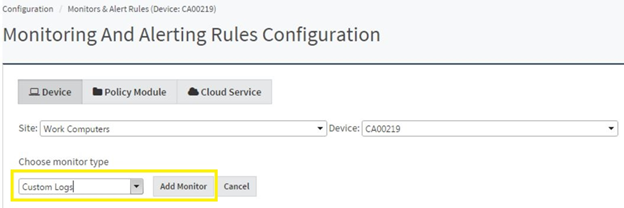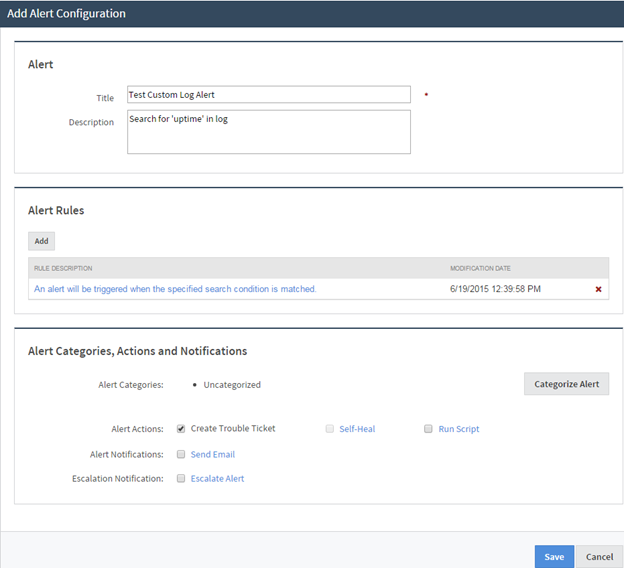Barracuda RMM allows you to configure many ways that devices or applications report their current status, including plain text log files. This type of monitoring is particularly useful when there are applications that only report their status with this kind of log file.
Custom log monitors cannot be included in Policy Modules (Templates) because they require the user to enter a valid path to the log file, which will not necessarily be the same on each monitored device.
As with any monitor, the trick is in knowing what information to alert upon. Take the time to review the vendor documentation and support forums, looking for common error messages that may appear in the logs. This kind of information is common in the documentation and will make creating the monitor and alert rules easy.
Once you have determined what text strings you would like to alert on, follow the procedure below to configure the monitor:
- Click Configuration > Alerting Monitor and Alert Rules.
- Use the Site and Device selection lists to choose the device that contains the log file you wish to monitor. Select Custom Logs and click Add Monitor.

- Enter a Title for the monitor, adding a meaningful description if you wish. Enter the absolute UNC File Path the monitor will use to access the file. The log files must be accessible via UNC path. Network-mapped drives are user-specific and are not accessible to Windows services, so the UNC path must be to a share on a local disk only.
- In the Monitor Tab under Search Settings, enter the Search String, which will be the text characters the monitor looks for when parsing the file. You can check the following options to modify how the text string is handled:
- Match case makes the search case-sensitive.
- Match whole word prevents the string from being found within another word.
- Use regular expressions treats the search string as a regular expression rather than an exact string.

- Switch to the Alerts tab and click Add, opening the Alert Configuration dialog.
- Enter a Title and meaningful description if you wish. Click Add under Alert Rules. The alert rule is automatically populated based on the monitor's settings for this type of monitor. Click Save.
Select any appropriate Alert Actions and Notifications and click Save.
- Once you have created a Custom Log monitor, the Logs tab appears on the Device Information page for the device. Click Save to close the monitor dialog.

